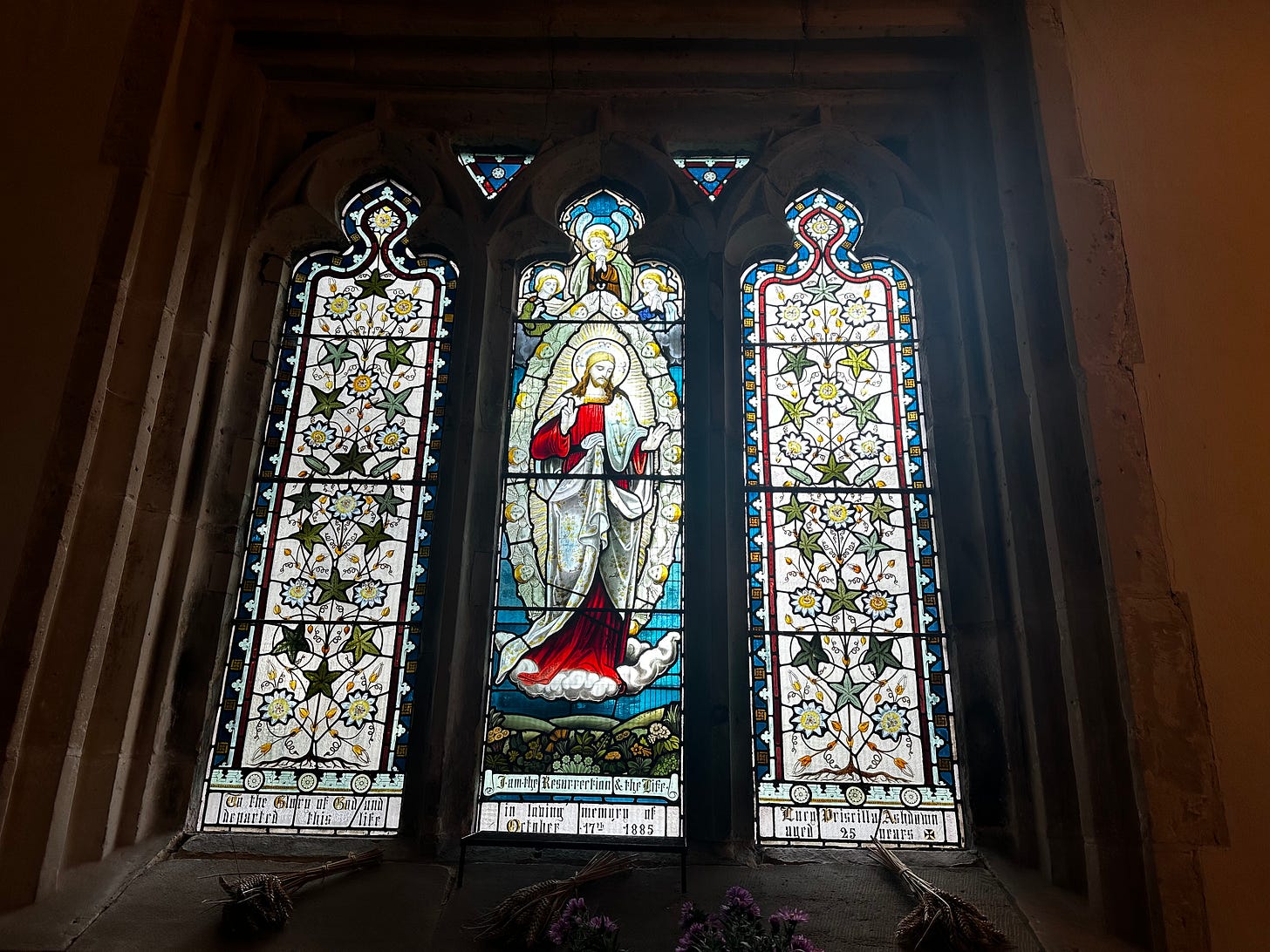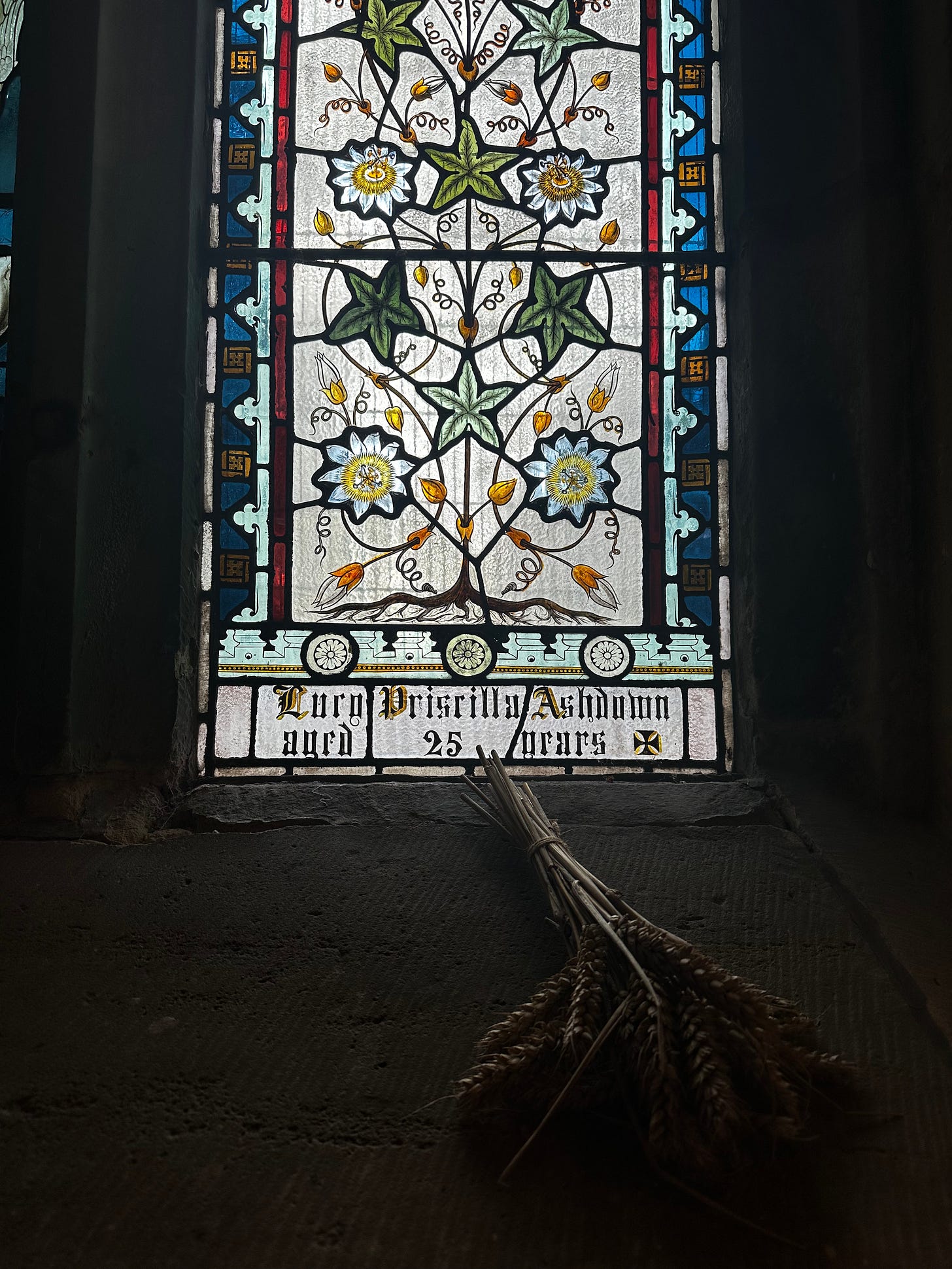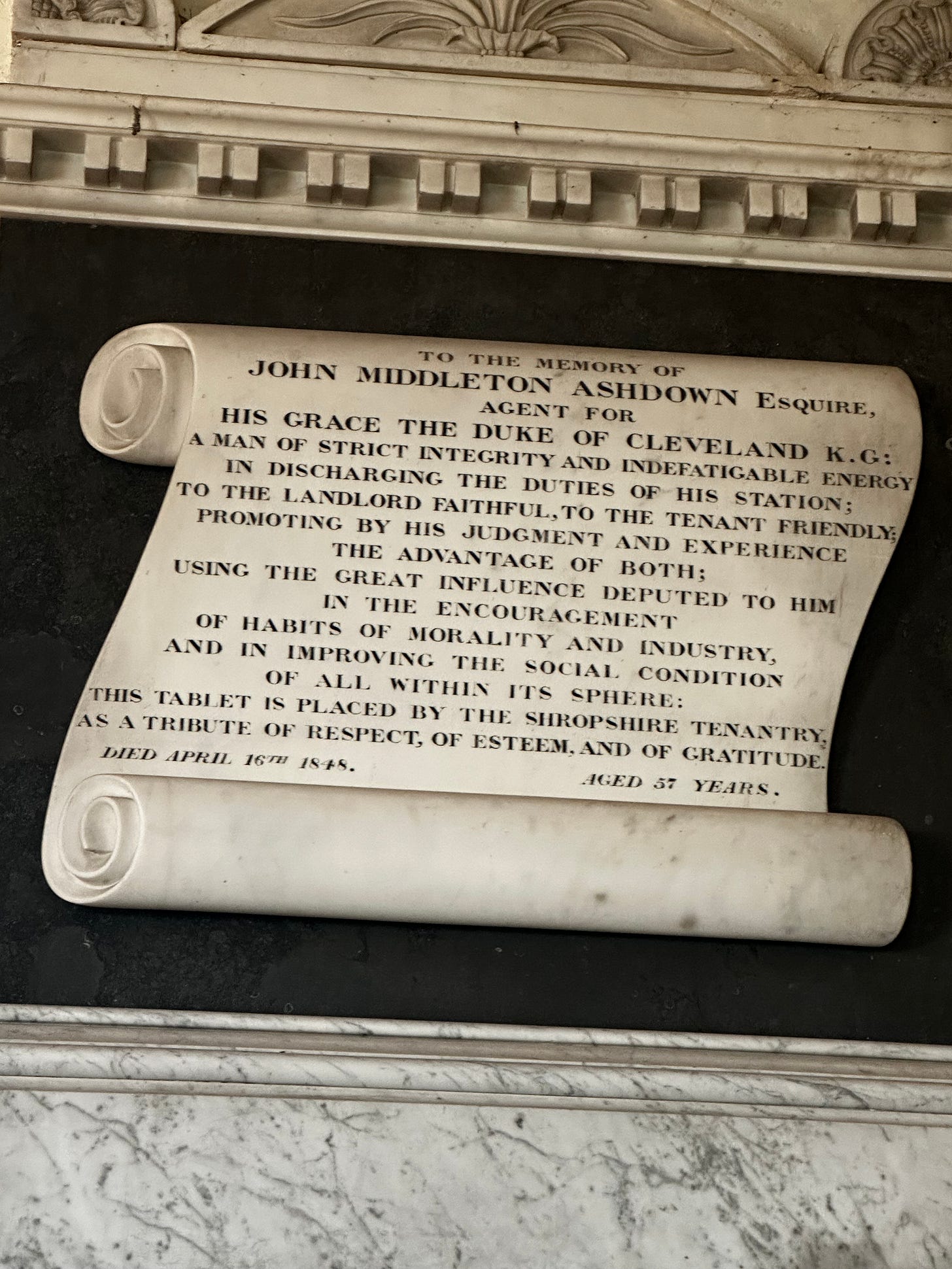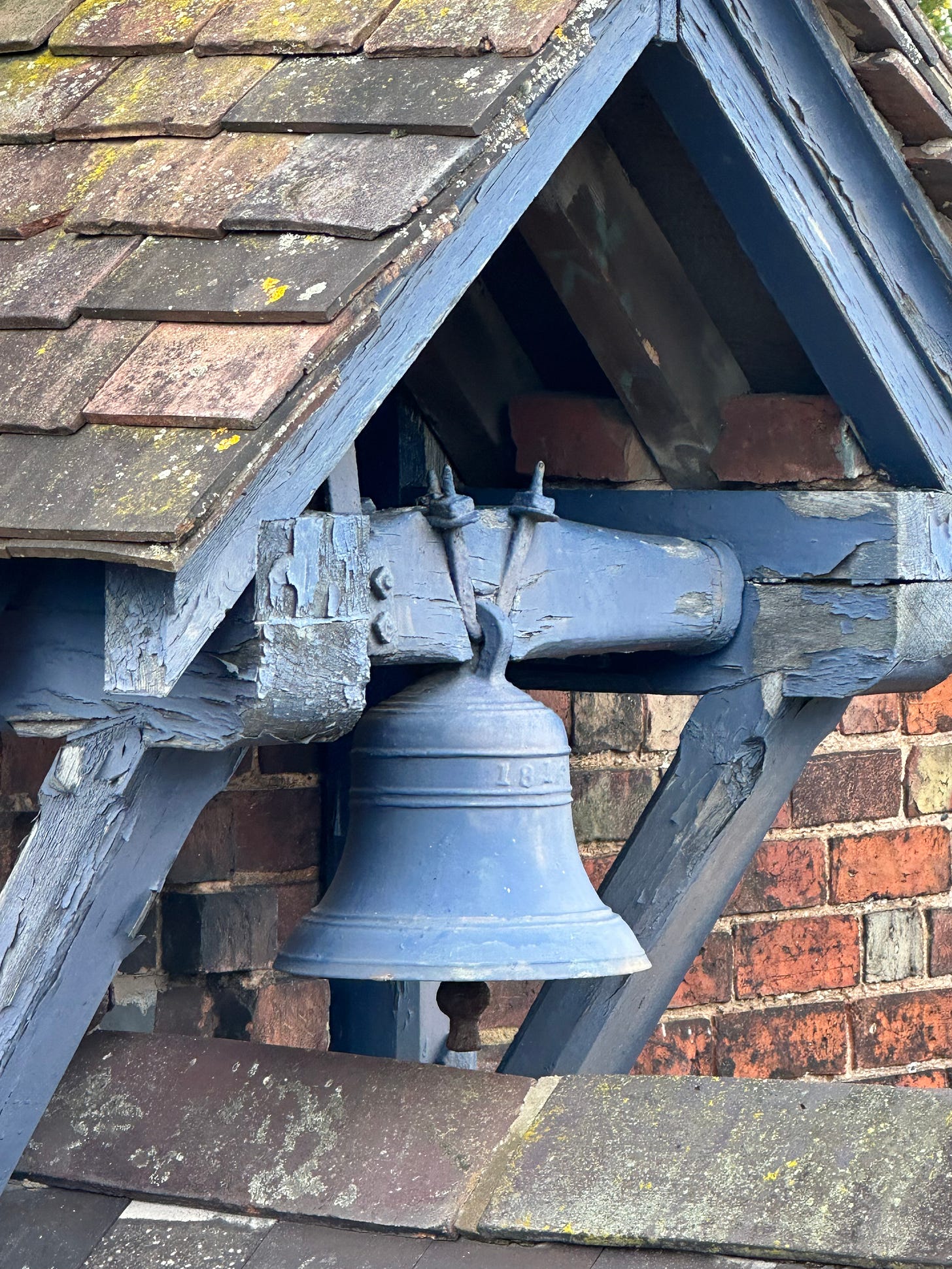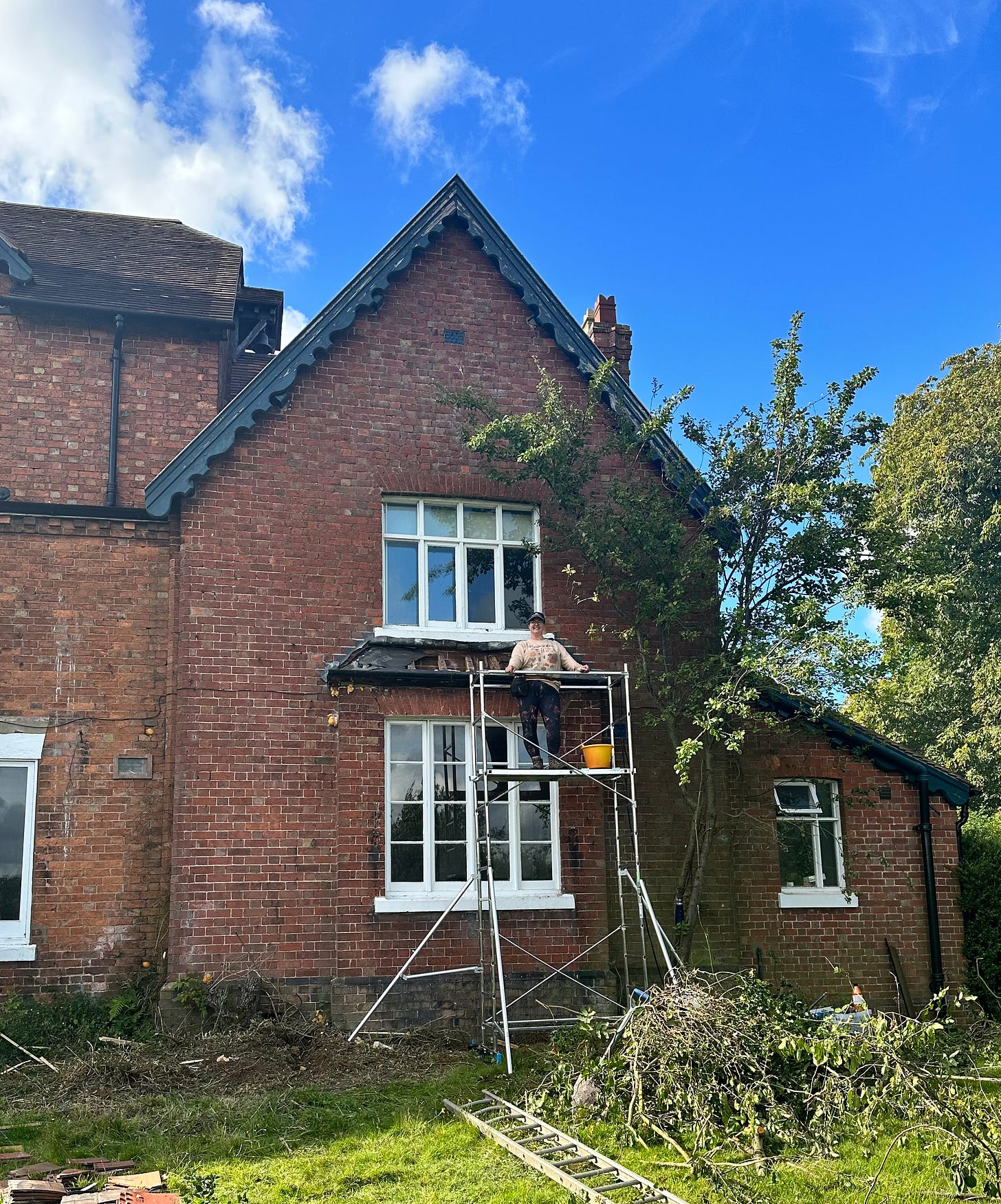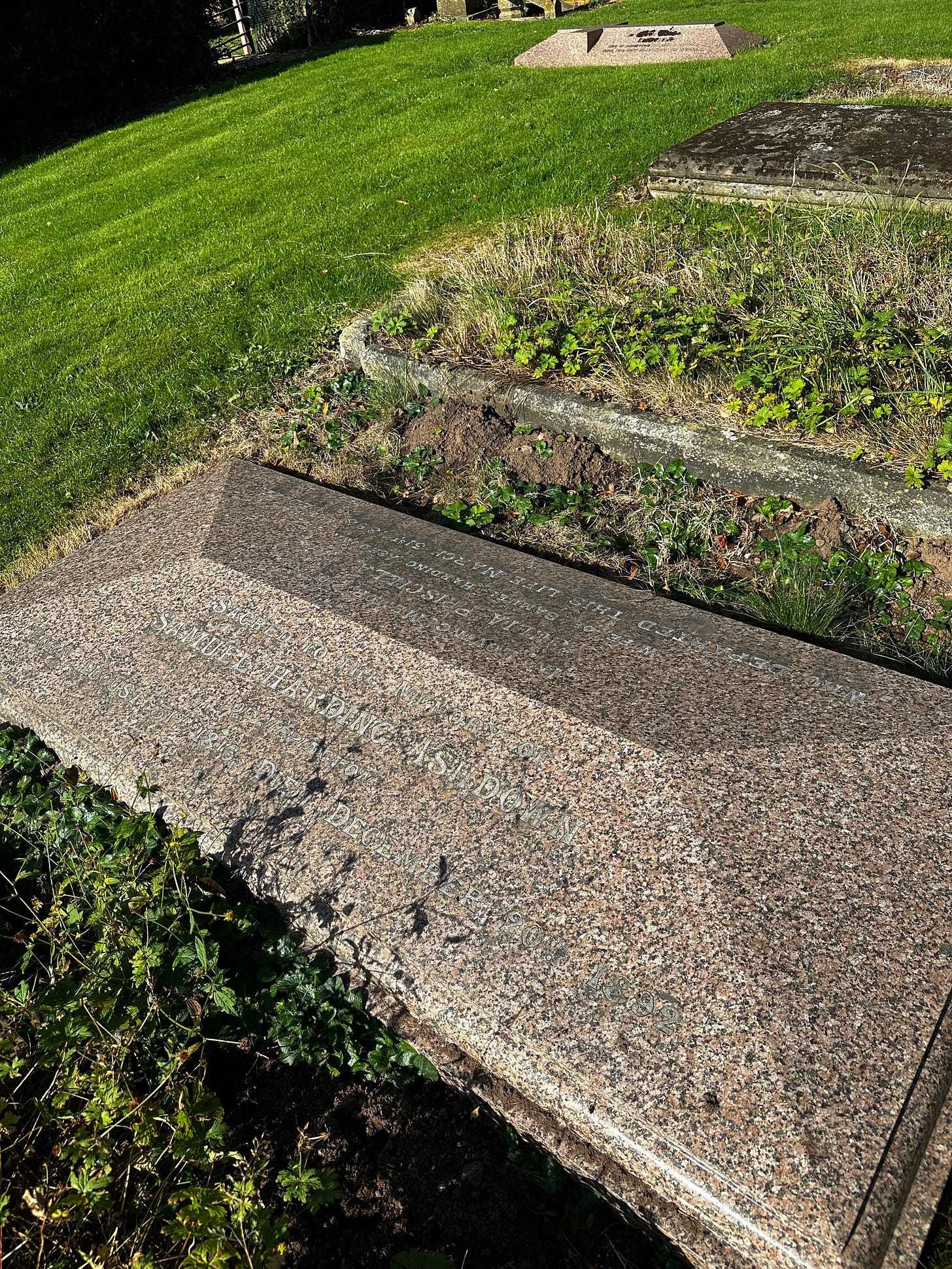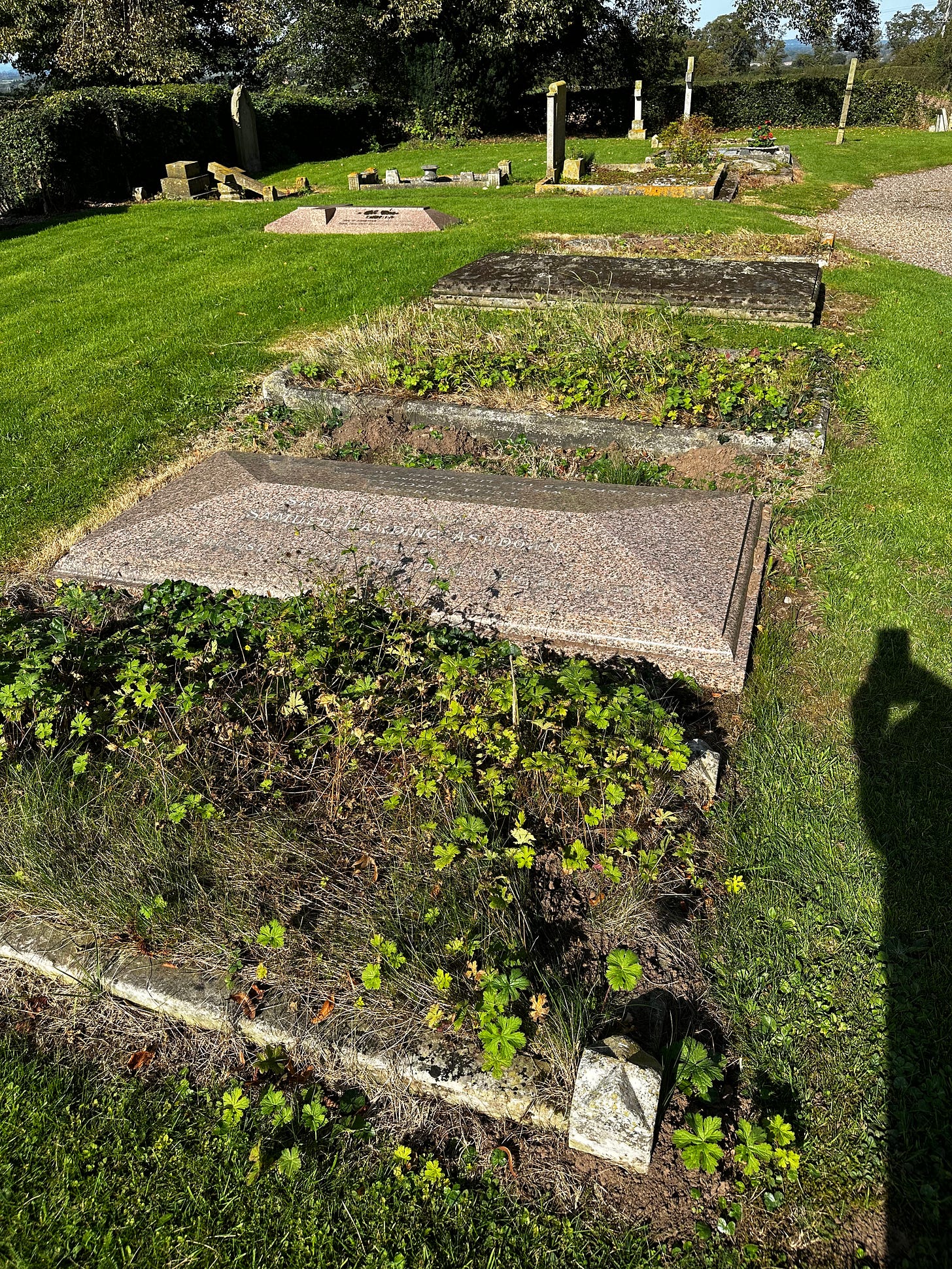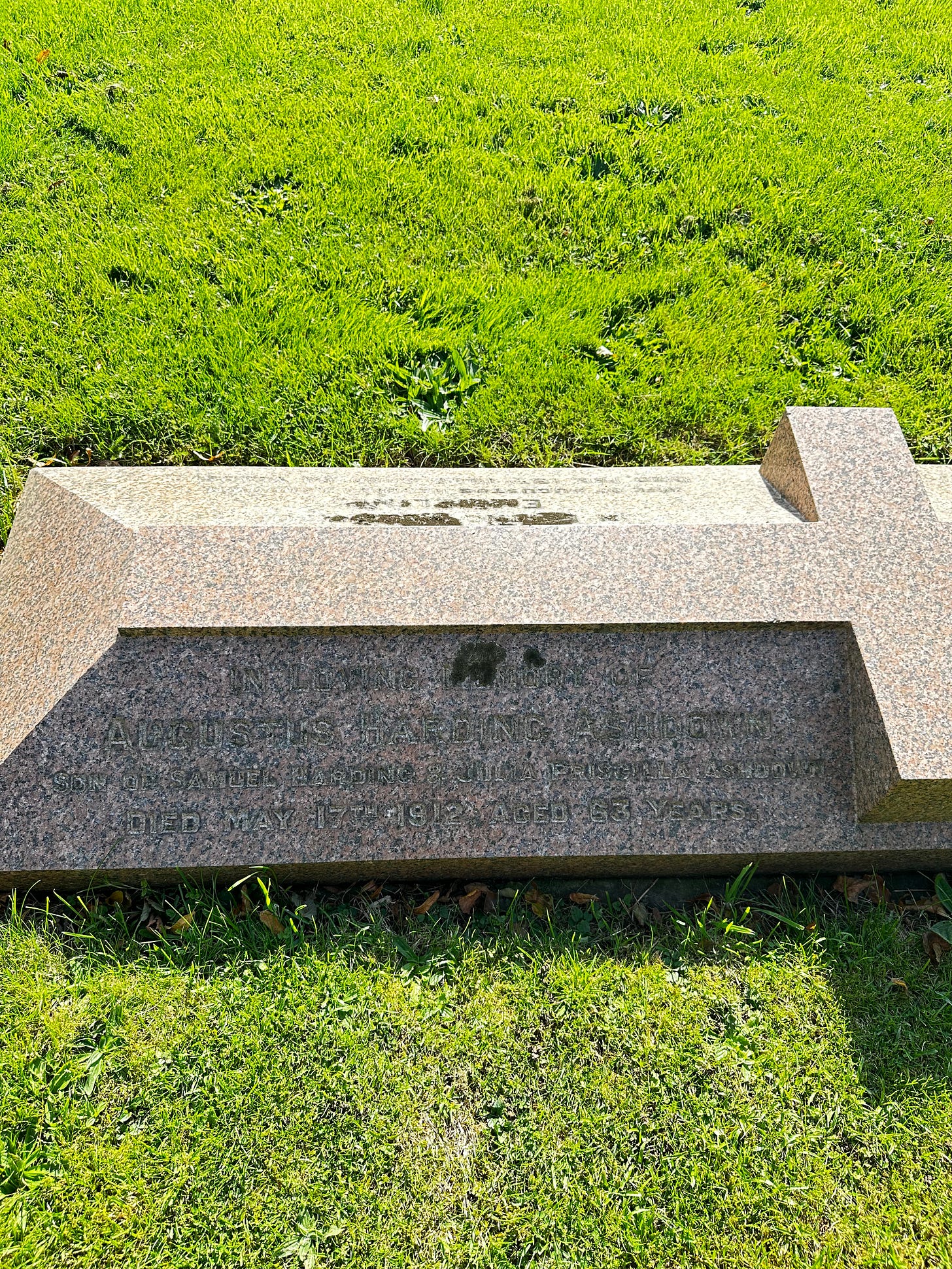So far we’ve traced the house history back to Colonel Sowaby and his whiskey heiress wife Muriel in 1913. You can read the last instalment here. We now turn to the census records to see who lived here before then and we come to the age of the Ashdowns. The Ashdowns were the land agents for the estate for three generations and there were a lot of them who lived here.
The most recent was Augustus Ashdown who was here for the 1911 and 1901 census. He was married to Emmeline and had at least six
children. He died in 1912 and the Sowabys took over soon afterwards.
Before Augustus came his father Samuel. He is listed as the head of the house on the 1861, 1871 and 1881 census. He was married to Julia and had at least 5 children. One of his daughters died at just 25 years old and they had a beautiful stained glass window dedicated to her in the church.
Of course all through this time there were plenty of staff here at the house too. Usually a cook, a couple of housemaids, a nursemaid or nanny and a groom.
This map shows the house and gardens in 1881 when Samuel was the head of the house. The house appears to be the same shape as it is now with only a few minor changes to the outbuildings having happened since then. One of the greenhouses is gone and some of the tiny garden buildings are no longer there.
In this map from 1925, you can even see the tennis court. Apparently, it was a grass court back then.
Here’s a screenshot of the house as it is now so you can see what I mean.
And then before Samuel came his father John Middleton Ashdown. He is the head of the house on the 1841 census. There is a plaque in his memory in the church opposite the stained glass window. It seems that he was a good and fair agent who was highly respected by all the tenants.
In this tithe map from 1839, the house looks a very different shape. It looks to be in the shape of a cross like a church. Of course, it’s hard to say how accurate this map is but it leads me to believe that lots of building work took place between 1839 and 1881. John died in 1848 so I suspect it was Samuel that made the big changes to the house.
Interestingly the bell has the date 1814 and is high up on the third floor of the main house. The attached estate office seems to be a later addition so maybe the main house was completed in 1814 and the office and basement levels that give the back of the house its shape were added later. One day I will get access to the estate records and know for sure when the house was altered.
Many of the Ashdowns are buried in the churchyard next door. It’s difficult to make out their names now but I like the fact that they’re nearby and keeping a watch over things. The Sowabys and the Eades are there too so it feels like a part of the legacy of the house. Maybe one day we will end up there as well?!
Following the house history before this is much more difficult but I have one more snippet to share. In a cupboard in the house, I found a copy of a book excerpt. It was written by Emma Boore in 1897 and details her memories and stories that she had heard.
It talks of the Haden family who were land agents for Sir William Pulteney who owned the estate before it came to the Vane family. They were given the house here after Captain Haden saved the life of Sir William Pulteney in some battle while in service for the Royal Navy.
Mrs Haden was a lady whose arrival in the village made a great sensation. She wore a flaxen wig and sometimes a high turban on her head and had three lapdogs, Tan, Fan and Spot. The first pianoforte known in Uppington was brought there for her from London and she is said to have been a good musician.
The farmers were expected to entertain the lapdogs by inviting them to bark (not bite) at the rats and mice when they removed their stacks. Their mistress accompanied her pets and shared the entertainment.
In January 1784 Sir William Pulteney, then Lord of Uppington, came to visit Captain Haden. All the village turned out on horseback to meet and escort him from the high-road.
In the evening the neighbours were invited to meet Sir William at a great dinner, given by Captain Haden, in honour of the event. Venison was sent for the occasion from Attingham and the Hills were among the guests.
Captain Haden died in 1796, after having lived over thirty years at Uppington. After her husband’s death Mrs Haden and her three daughters continued to live at Uppington. The eldest married Dr. Jones of Wellington.
After the death of Mrs Haden, the doctor and his family lived in the house at Uppington, where he carried on his medical practice for some years. He was a pupil of the eccentric and celebrated Dr. Darwin of Shrewsbury.
I would guess that this all refers to our house as it has been known in the village as the agents' house for as long as anyone can remember. Dr. Darwin of Shrewsbury is of course Charles Darwin of On the Origin of Species fame. The Hills were the owners of Attingham Park, a large estate near here now owned by the National Trust and open to the public.
So I don’t have any certain evidence but that perhaps explains the occupancy of our house from around 1765 until the Ashdowns took over in the early 1800s. I love the description of Mrs Haden. She sounds like quite the character!
I will do my best to find out more about the Hadens and eventually, I hope to discover what this house looked like back then. I will keep you all informed on my discoveries! Thank you for reading if you made it this far :-)


